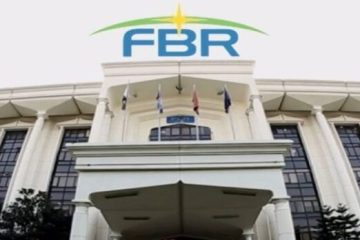Federal Board of Revenue (FBR) functions through a dual mechanism: the established body of tax laws that dictate compliance, payments, and documentation, and its digital system, currently operating under the name IRIS. While these two components should ideally work in seamless harmony, a persistent and troubling disconnect often emerges, leaving taxpayers caught in a web of inconsistencies and facing undue hardship.
A Fundamental Disconnect of Law and System
The fundamental issue lies in the frequent misalignment between the FBR’s legal pronouncements and the capabilities of its online system. Notifications and amendments to tax laws are often not reflected in the IRIS system promptly, or sometimes not at all. Conversely, the system occasionally introduces features or restrictions that lack any legal foundation. This creates a chaotic environment where taxpayers struggle to understand which set of rules to follow – the written law or the dictates of the digital platform.
System Lockdowns in Response to Perceived Evasion
A significant driver behind these systemic issues seems to be the FBR’s reactive, often abrupt, approach to perceived tax evasion. Whenever the FBR suspects potential loopholes or instances of non-compliance within a particular sector, its immediate response is often to implement system-level restrictions – a tactic that can be described as a digital “lockdown.” While perhaps intended to quickly plug perceived gaps, this frequently disrupts legitimate processes and creates significant hurdles for honest taxpayers.
Sales Tax Revision – Law Allows, System Forbids
A prime example of this is the recent issue surrounding the revision of sales tax returns. The law clearly grants taxpayers a 60-day window to revise their returns. However, without any corresponding legal amendment, the IRIS system suddenly locked this functionality. This blatant disregard for the existing legal framework has left taxpayers unable to correct genuine errors within the stipulated timeframe, highlighting the alarming power the system wields, often independent of the law.
SRO 350 Implementation: A Timeline and Technical Mishap
Another illustrative case is the implementation of SRO 350 from the previous year. This statutory order imposed a 30-day deadline for various actions, including balance sheet updates. However, the IRIS system was reportedly updated on the 30th day of the notification itself, effectively leaving taxpayers with no time to comply. Adding to the frustration, a system bug further delayed the alignment between the law and the digital platform for a staggering four months.
Frustration and Legal Recourse
The consequences of this ongoing disconnect are manifold. Taxpayers are forced to navigate a confusing landscape where the rules of engagement are unclear. The need to seek legal clarification and challenge system-imposed restrictions in the courts has become increasingly common, adding further burden and cost to the already complex process of tax compliance.
A Cycle of SROs and Updates:
The FBR’s apparent strategy of combating tax evasion through a constant barrage of new SROs, amendments, and frequent changes to tax return formats and the IRIS interface seems to be exacerbating the problem. The daily introduction of new buttons and features in the online portal, often without adequate explanation or legal grounding, creates an environment of perpetual uncertainty and anxiety for taxpayers.
Mandatory Password Changes
The recent mandate requiring taxpayers to change their IRIS passwords every 60 days further exemplifies this disconnect from practical realities. While security is important, this blanket policy fails to consider the diverse nature of taxpayers and the logistical challenges it presents, especially for those with limited digital access or those managing numerous accounts.
Bridging the Gap for Effective Tax Administration
Ultimately, the FBR must recognize the urgent need to bridge the gap between its legal framework and its online system. The IRIS platform should be a tool that facilitates compliance, not an obstacle course riddled with inconsistencies and contradictions. The FBR needs to prioritize aligning its digital infrastructure with the established laws, ensuring that any system-level changes are preceded by proper legal amendments and thorough testing. Only through such a coordinated and thoughtful approach can the FBR truly serve its purpose of efficient and fair tax administration, rather than constantly leaving taxpayers feeling harassed and confused.




